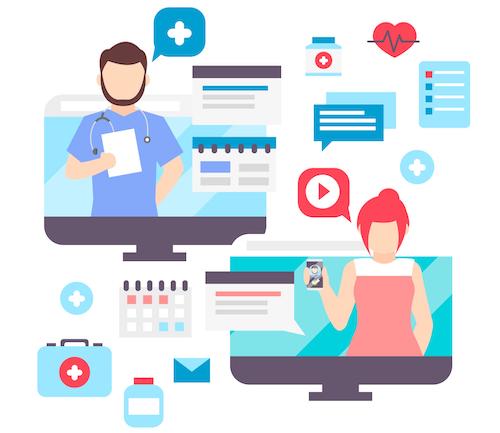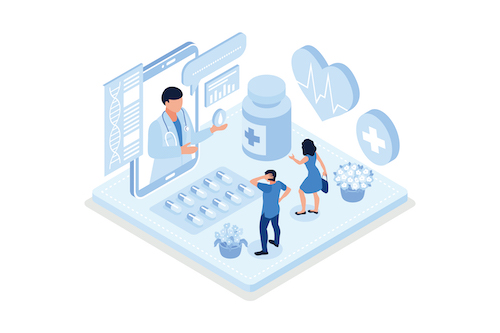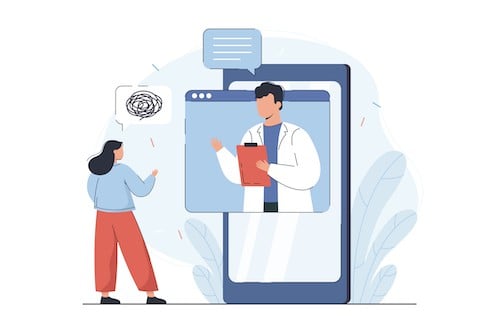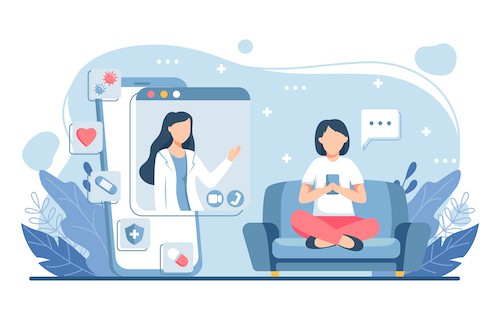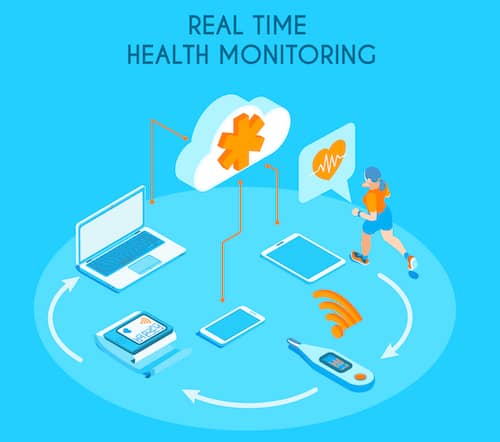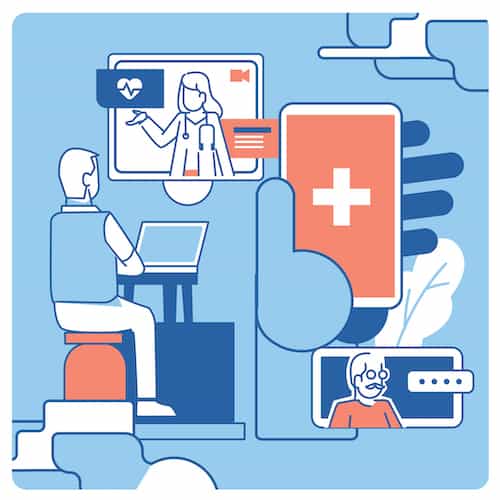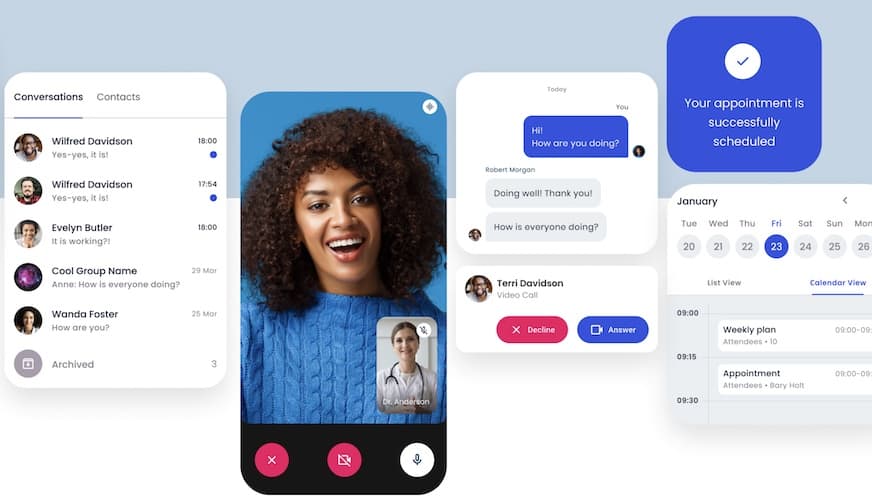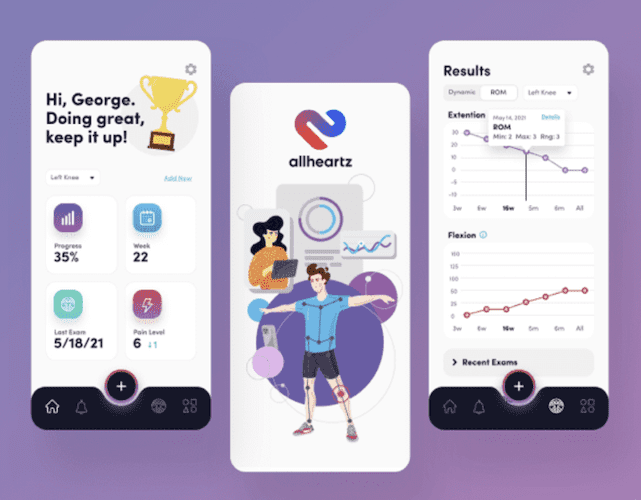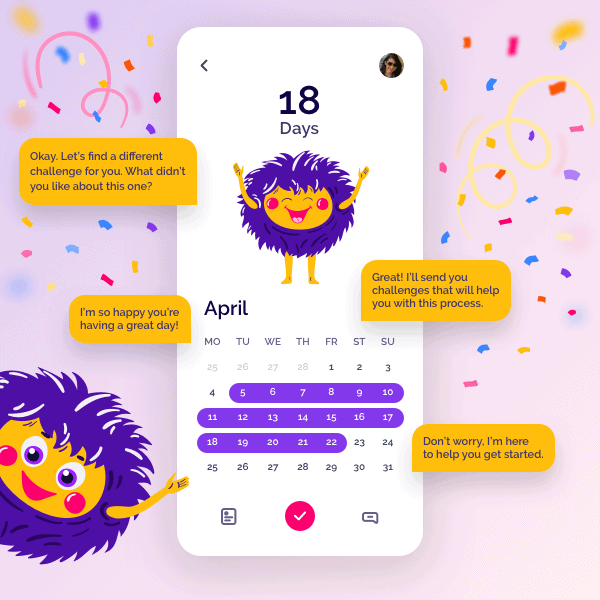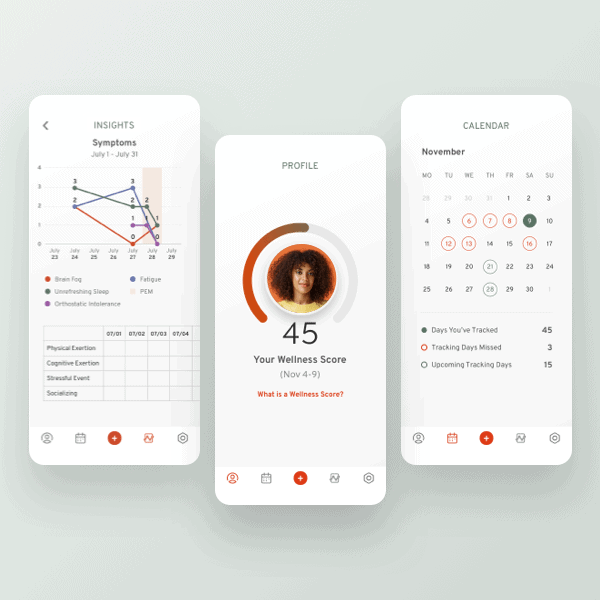In the realm of value-added medicine, the landscape is shifting towards patient-centric innovations. Gone are the days when medical software solely aimed to enhance and streamline providers’ workflows.
Regardless of whether the app is intended for patients directly or not, prioritizing optimal patient engagement activities is essential. Let’s dive into the nitty-gritty of how to increase patient engagement to ensure the successful development of a healthcare app that genuinely engages customers.
Top Takeaways:
- Embrace a Holistic Approach: Patient engagement is not limited to a single point in the healthcare journey. It begins before the visit, continues during the visit, and extends into aftercare. By implementing strategies like starting engagement before the visit, practicing shared decision-making, and providing continuous care, healthcare providers can foster a comprehensive approach to patient engagement.
- Leverage Digital Solutions: In the modern healthcare landscape, digital solutions play a vital role in patient engagement. Utilizing web portals, mobile apps, telehealth platforms, and AI technologies allows providers to personalize care, educate customers, and facilitate multi-channel outreach. These tools streamline communication, enhance accessibility, and empower patients to actively participate in their own healthcare.
- Consider Specode: an automated platform with HIPAA-compliant customizable components that can be used as a white-label telehealth solution to boost patient engagement. With features such as appointment scheduling, video/audio calls, live chat, and EHR integration, it enables seamless virtual care delivery. Leveraging Specode as a white-label telehealth platform can enhance patient experiences, increase accessibility, and strengthen the provider-patient relationship.
Table of Contents:
- What Does Patient Engagement Really Mean?
- Why Is Patient Engagement So Important in the Healthcare Industry?
- 7 Best Strategies to Improve Patient Engagement
- How Specode Helps to Increase Patient Engagement
- Successful Patient Engagement Examples from Topflight’s Experience
What Does Patient Engagement Really Mean?
Patient engagement refers to the active involvement of patients in their healthcare and overall well-being. While healthcare delivery remains the primary responsibility of providers, modern digital solutions such as portals or mobile apps have emerged as valuable tools in fostering the relationship between patients and providers. These solutions enable patients to play a more active role in care management and establish meaningful connections with providers, moving away from being talked above their heads.
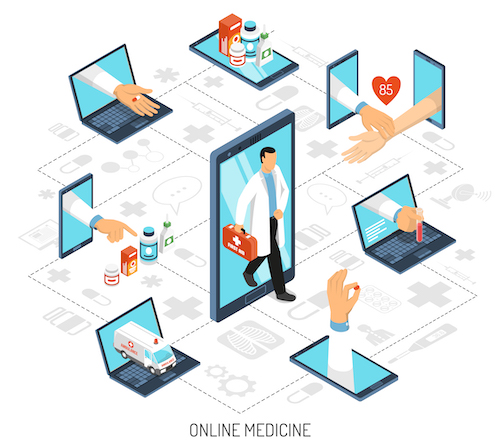
To adopt an effective patient engagement strategy, providers are actively seeking new ways to engage people and involve them in shared decision-making and self-management of their care. A crucial concept closely associated with patient engagement is patient activation. The patient activation measure (PAM) is a tool used by clinicians to assess a customer’s knowledge and confidence in collaborating with providers regarding their health management. By utilizing PAM, clinicians can determine whether a patient possesses the ability to:
- Effectively self-manage an illness and address health problems
- Engage in activities that promote functioning and minimize health declines
- Participate in treatment and diagnostic decision-making processes
- Make informed choices regarding providers or organizations based on performance and quality
- Successfully navigate the complex healthcare system
By understanding and assessing patient activation levels, caregivers and providers can tailor their engagement approaches to effectively support patients in taking an active role in their healthcare journey.
Why Is Patient Engagement So Important in the Healthcare Industry?
Patient engagement holds immense significance in the healthcare industry for various compelling reasons. When patients are actively engaged in their healthcare journey, several positive outcomes can be observed.
Improved health outcomes
Firstly, engaged patients are more likely to take a proactive role in managing their health and understanding their medical conditions. By being actively involved in their care, they gain a deeper understanding of their conditions, treatment options, and necessary lifestyle changes.
This knowledge empowers them to make informed decisions and actively participate in their own well-being. As a result, engaged patients are more likely to adhere to treatment plans, follow medication regimens, and adopt healthy behaviors, leading to improved health outcomes.
Lower healthcare costs
Moreover, patient engagement has a direct impact on healthcare costs. Engaged patients are better equipped to prevent or manage chronic conditions, reducing the need for expensive hospitalizations or emergency room visits.
By actively participating in their care and making necessary behavior changes, patients can lower the risk of complications, thus decreasing healthcare expenditures for both themselves and the healthcare system as a whole.
Also Read: Understanding healthcare app development costs
Additionally, engaged patients are more likely to utilize preventive services and seek timely medical attention, enabling early detection and intervention, which can help avoid costly treatments in the long run.
Provider-patient rapport
Furthermore, patient engagement fosters a collaborative relationship between patients and healthcare providers. When patients are engaged, they can effectively communicate their concerns, preferences, and goals to their healthcare team. This open dialogue promotes shared decision-making, where patients and providers work together to develop personalized treatment plans that align with the patient’s values and preferences. This collaborative approach not only enhances patient satisfaction but also improves the overall quality of care delivered.
By prioritizing patient engagement, healthcare organizations can drive positive changes and deliver patient-centered care that ultimately benefits patients and the healthcare system.
7 Best Strategies to Improve Patient Engagement
In today’s digital age, healthcare organizations have a wealth of digital medical solutions at their disposal to foster patient engagement. These solutions offer a diverse range of tools that can significantly improve the patient experience and outcomes.
However, it is important to recognize that simply incorporating a smart chatbot or implementing a single feature will not guarantee immediate improvements. A holistic approach that encompasses the entire patient journey is essential.
To effectively enhance patient engagement, healthcare providers need to consider various factors, including:
- patients engagement platforms
- level of patients’ technological proficiency
- health data accessibility within legacy systems
- HIPAA requirements for patient-facing interactions
It is crucial to understand that patient engagement extends beyond a single interaction or isolated tool. Instead, it involves integrating strategies throughout the entire patient journey to establish a comprehensive and patient-centric approach to care.
Related: HIPAA Compliant App Development Guide
Without further ado, let’s explore the 9 best strategies for improving patient engagement. These strategies encompass a broad spectrum of features and initiatives, both on the patient and provider sides. By adopting these strategies and implementing them in a cohesive manner, healthcare organizations can create a seamless and engaging patient experience that spans from pre-visit preparations to post-care follow-up.
By prioritizing a comprehensive and patient-centric approach, we can unlock the full potential of digital medical solutions and truly transform the patient journey.
#1: Initiating Engagement Prior to the Visit
The first step in optimizing patient engagement is to start the process even before patients arrive at the medical practice, bypassing any potential hurdles at the front office. By establishing a seamless and patient-centric experience from the beginning, healthcare providers can lay the foundation for a strong and meaningful patient-provider relationship.
A crucial aspect of this strategy is facilitating convenient appointment scheduling. Patients should have the flexibility to book appointments through their preferred communication channel, whether it be:
- a user-friendly mobile or web app
- a simple phone call
- or even messaging platforms
Offering multiple options empowers patients to choose the method that aligns best with their preferences and technological comfort.
Once an appointment is scheduled, it is essential to gather additional information to enhance the patient experience. This includes:
- obtaining informed consent
- providing intake forms for sharing medical history
- assessing patients’ communication preferences
To implement this strategy effectively, healthcare organizations should consider utilizing the following digital solutions:
- patient portal as a centralized hub for managing appointments
Automated appointment scheduling systems can streamline the process, minimizing wait times and enhancing patient convenience.
- IVR and chatbot integrations
Integrating interactive voice response (IVR) systems or chatbots can further facilitate patient engagement by providing instant responses and guidance.
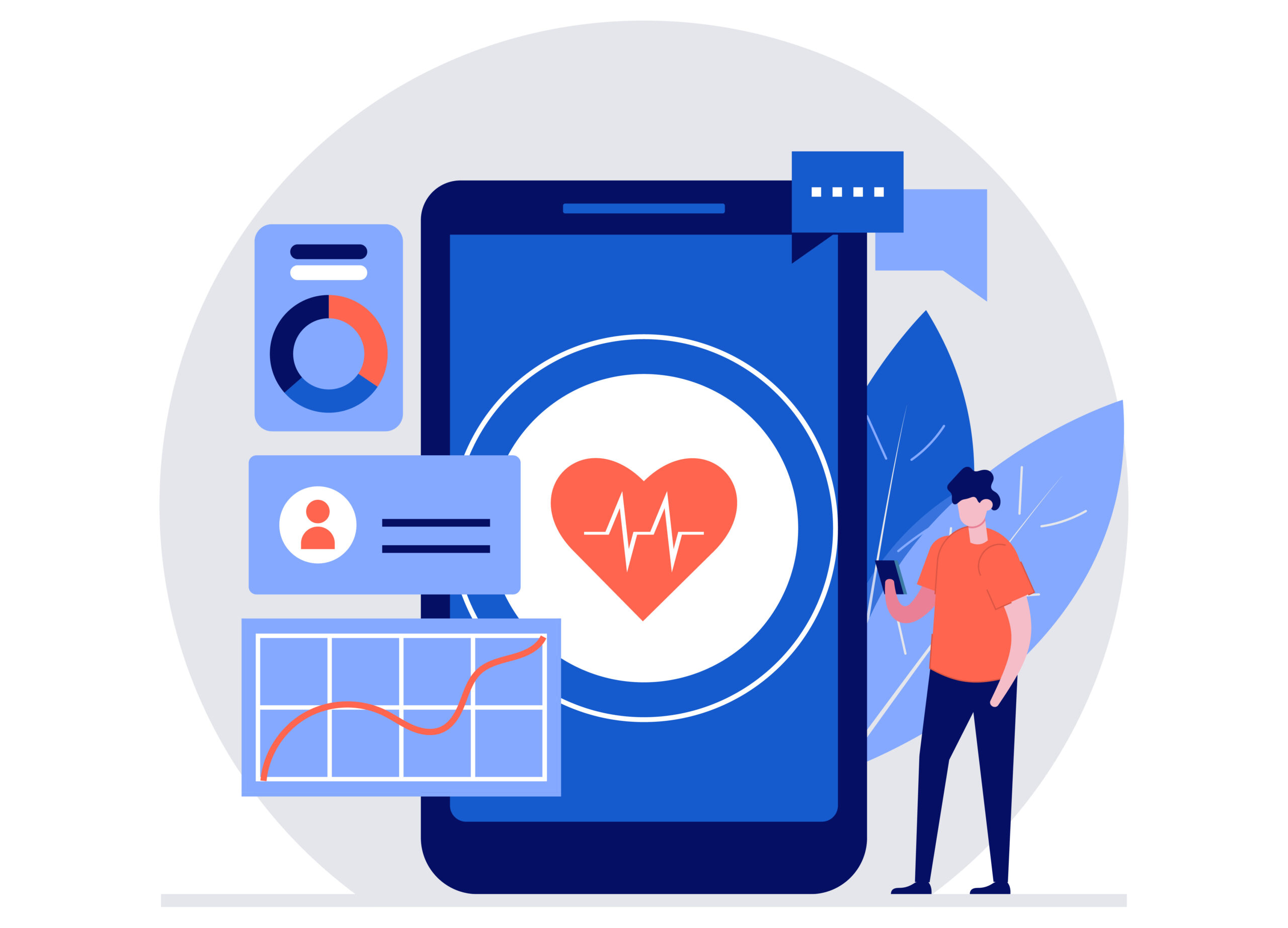
#2: Removing clutter from care navigation
Streamlining care navigation is a crucial step in increasing patient engagement. According to a survey conducted by Harris Poll on behalf of AAPA, individuals spend up to eight hours each month on care coordination and healthcare navigation. Patients also express the desire for healthcare providers to provide more assistance in understanding the healthcare system, with 54 percent agreeing that their health would improve with such support.
To address this, healthcare organizations can implement strategies that optimize care navigation from both the patient and provider’s perspectives.
On the patient’s side, a dedicated mobile app can play a vital role in providing essential information about their healthcare journey. This app can offer insights into the current stage of their care and proactively notify patients about upcoming procedures. By equipping patients with these tools, they can navigate their healthcare experiences more effectively and feel empowered and engaged in their own care.
For healthcare providers, practice management tools become invaluable for tracking patients’ care journeys. These tools enable providers to connect with patients during critical moments, ensuring timely and personalized care. Additionally, provider portals facilitate collaboration among team members, resulting in better organization and coordination of care delivery.
#3: Practicing shared decision-making
Practicing shared decision-making is a pivotal strategy for increasing patient engagement throughout the entire healthcare journey. By actively involving patients in their care decisions and ensuring they are well-informed, healthcare providers can empower patients to take an active role in managing their health.
This approach fosters a collaborative partnership between patients and providers, ultimately leading to improved patient satisfaction and better health outcomes.
The practice of shared decision-making begins before the patient’s visit and continues throughout their care experience. It involves transparently sharing all possible treatment options, discussing patient health-related goals, and considering the patient’s unique circumstances and preferences.
By providing patients with a comprehensive understanding of their condition and available choices, healthcare providers facilitate informed decision-making, enabling patients to actively participate in determining their course of treatment.
To support shared decision-making, healthcare organizations can leverage various tools and resources:
- patient education materials, such as brochures and videos
- interactive online platforms
- AI assistants and chatbots
Related: Chatbots in Healthcare
All these tools can enhance patients’ comprehension of their condition and treatment options. Additionally, utilizing digital platforms that enable secure communication and shared documentation can facilitate ongoing discussions and ensure patients have access to relevant information.
By actively practicing shared decision-making, healthcare providers empower patients to become active participants in their own care, which also helps them to quickly adopt a healthy lifestyle.
#4: Educating patients every step of the way
Patient education is a vital component in fostering shared decision-making and empowering patients to make informed choices about their healthcare. By providing comprehensive and accessible education, healthcare providers can equip patients with the knowledge needed to actively participate in their care journey.
To facilitate effective patient education, healthcare providers should ensure that patients receive information about their condition, available treatment options, potential risks and benefits, and anticipated outcomes. This education should be tailored to the individual patient and delivered at various stages—before, during, and after a visit—to ensure a solid foundation of knowledge is established.
One method that can enhance patient education is the use of the teach-back method. This approach encourages patients to explain what they have learned, allowing healthcare providers to assess their understanding and address any misconceptions or gaps in knowledge. By confirming patients’ comprehension, healthcare providers can foster effective communication and ensure that patients are well-informed participants in the decision-making process.
Digital solutions, such as ChatGPT-like bots, can also play a role in patient education. Studies have shown that these bots can provide accurate answers to patient queries, taking into account patient health literacy. For example, according to a study conducted by the University of Maryland School of Medicine, it was discovered that ChatGPT demonstrated an impressive accuracy rate of 88 percent when responding to patient queries.
Additionally, patient forums can serve as platforms for patients to share their symptoms and treatment experiences, providing support and valuable insights to one another.
Innovative technologies like augmented reality (AR) and virtual reality (VR) can further enhance patient education. These immersive tools enable patients to visualize complex medical concepts, procedures, and treatment outcomes, improving their understanding and engagement.
#5: Providing continuous care
Ensuring continuous care is a crucial strategy to improve patient engagement and healthcare outcomes. Aftercare is a critical phase where patients may struggle with adhering to instructions and maintaining their progress. By leveraging remote patient monitoring tools, healthcare providers can keep patients engaged and supported during this crucial period.
Remote patient monitoring (RPM) involves utilizing technology to collect patient data outside of traditional healthcare settings. This allows healthcare providers to remotely monitor patients’ vital signs, symptoms, and adherence to prescribed treatments. RPM tools can include:
- wearable devices
- mobile apps
- connected sensors
Syncing with secure cloud storage, such RPM platforms gather real-time data and transmit it to healthcare professionals.
Related: RPM App Development Guide
By implementing RPM, healthcare providers can proactively track patients’ progress, identify potential issues or non-adherence to aftercare instructions, and intervene when necessary.
Through personalized feedback, reminders, and notifications, providers can keep patients motivated and informed about their ongoing care. For instance, appointment reminders, medication adherence nudges, or drug refill notifications can be automated through RPM technology. Additionally, RPM enables healthcare providers to promptly evaluate and address any irregularities or changes in patient health status.
You might want to check out our guide on medication reminder app development.
The continuous care provided by RPM fosters patient engagement by demonstrating ongoing support and proactive management of their well-being. Patients feel connected to their healthcare providers even outside of traditional clinic visits, fostering a sense of care and accountability. This technology-driven approach promotes adherence to aftercare instructions, reduces the risk of complications, and ultimately leads to better patient outcomes.
#6: Personalizing care delivery
Personalizing care delivery is a key strategy for enhancing patient engagement and fostering a strong patient-provider relationship. Patients want to feel valued and assured that their healthcare provider genuinely cares about their well-being and best interests. By tailoring care to individual patients, healthcare providers can enhance patient satisfaction, trust, and overall engagement.
One way to personalize care delivery is by leveraging insights gained from how patients use healthcare software. Through the analysis of patient interactions, healthcare providers can gain valuable information about patients’ preferences, needs, and behaviors. This data can help inform personalized treatment plans, communication strategies, and care recommendations.
AI technologies and machine learning algorithms play a vital role in this process. By continuously learning from patient data, these technologies can identify patterns, predict patient needs, and provide personalized recommendations. For example, AI-powered systems can suggest relevant educational resources, medication reminders, or lifestyle modifications based on individual patient profiles.
Related: AI App Development Guide
By personalizing care delivery, healthcare providers demonstrate a genuine commitment to their patient’s well-being, fostering a sense of trust and loyalty. Patients feel understood and supported when their unique needs and preferences are taken into account.
#7: Patient outreach
Patient outreach is a vital strategy to improve engagement by establishing effective communication channels between healthcare providers and patients. To accommodate diverse preferences, it is crucial to offer multi-channel options, including automated technologies.
Automated phone calls and messaging platforms enable providers to reach patients conveniently, even when they are unavailable. Automated technology excels in delivering appointment reminders, medication adherence nudges, and drug refill notifications. Personal messages are more suitable for evaluating behavior changes via telehealth solutions and addressing observations from remote patient monitoring.
Respecting patients’ preferred communication channels is essential. By enabling patients to connect through their chosen means, healthcare providers can facilitate timely interactions and strengthen the patient-provider relationship.
Implementing a comprehensive patient outreach strategy, leveraging multi-channel communication and automated technology where applicable, enhances patient engagement, improves care coordination, and ensures patients receive the necessary support for optimal healthcare outcomes.
How Specode Helps to Increase Patient Engagement
If you’re seeking effective ways to increase patient engagement, the Specode platform is the ultimate solution. With its comprehensive features and essential services, it serves as a powerful tool for healthcare providers.
Let’s explore how Specode’s components can significantly impact patient engagement.
Comprehensive Features for Patient Engagement
- Streamlined appointment scheduling
Patients can easily book appointments, ensuring convenience and accessibility.
- Seamless EHR integrations Or built-in EHR
Integration with electronic health records facilitates a holistic view of patient data, enabling personalized care.
- Video and audio calls
High-quality teleconferencing capabilities enable virtual consultations, fostering patient-provider interactions.
- Live chat functionality
Real-time messaging allows patients to communicate with healthcare professionals for quick assistance.
- Ai agents, mood/symptom tracking, and much more
Essential Services for Enhanced Patient Experience:
- HIPAA compliance
Ensure patient data privacy and security, adhering to the industry regulations.
- Mobile and web interfaces
Accessible across multiple devices, enabling patients to engage with healthcare services conveniently.
- Out-of-the-box scalability
The platform can adapt to the growing needs of your practice, accommodating an expanding patient base.
Rapid Implementation and Time-to-Engagement:
Specode offers the advantage of swift implementation, allowing providers to engage with patients in a matter of 1 month, if not sooner. By opting for a pre-built solution, healthcare organizations save valuable time and resources that would otherwise be spent on developing a telehealth platform from scratch.
By harnessing the capabilities of Specode, healthcare providers can seamlessly integrate telemedicine services into their practice, fostering patient engagement, improving access to care, and enhancing overall patient experience.
Learn more about how these solutions work in our overview of the online doctor app.
Successful Patient Engagement Examples from Topflight’s Experience
Since many apps we build revolve around healthcare and wellness, applying patient engagement strategies in a digital ecosystem never escapes our attention. Even if an application is strictly provider-facing, we still must consider how to improve patient engagement. Here are a few examples.
Specode: Patient Engagement at Startup Speed
Specode is Topflight’s automated platform built specifically for rapid patient engagement solutions. Think of it as a ready-to-run telehealth backbone: virtual visits, patient check-ins, AI-assisted workflows for notes and prescriptions, lab integrations, and even mood tracking or daily journaling for mental health programs. Providers and patients engage not only through video consults, but also with continuous features like symptom monitoring, reminders, and secure messaging.
What makes it stand out is speed and flexibility. Teams can launch a compliant, customizable patient engagement app in just a few weeks—not months—while still retaining full code ownership. And because the platform evolves with customer input, clients aren’t just users of Specode; they’re contributors to its roadmap, helping shape next-generation engagement tools.
Allheartz: computer vision in physiotherapy and sports care
Allheartz makes AI-assisted remote therapeutic monitoring and recovery simple. Patients and physicians interact via a mobile app that detects patients’ exercises and accumulates health data. As a result:
- up to 50% of in-person patient visits are replaced with at-home AI-enabled self-examination
- providers spend up to 80% less time on paperwork and get more time to interact with patients
WalkerTracker: digital wellness platform for employees
WalkerTracker is one of our favorites: got two prominent mobile design awards last year and a successful exit. The platform (a mobile app for employees and a web portal for employers, plus integrations with wearables) allows businesses to run engaging step-counting challenges and other healthy activities for their employees.
- 316+ billion steps tracked across 73,000 teams in the US
- Healthiest Employers Award, 2022
- Web Excellence Award and Gold Stevie Awards Winner, 2022
SoberBuddy: virtual recovery coach
We helped certified addiction specialists Paul Brethen and Tara Schiller develop SoberBuddy — an evidence-based drug and alcohol recovery chatbot. The smart bot help people overcome stigma and take one step at a time on the road to recovery.
- boosted retention by 300%, increased average engagement time by 40%
- increased user count to 30,000+
You & ME: patient registry and symptom tracking app
Solve ME is the largest non-profit fighting chronic fatigue syndrome (CFS), Long COVID, and other post-infection diseases. The company strives to engage the entire patient community in research to make these illnesses diagnosable and treatable.
The patient registry portal and a symptom-tracking app we built help Solve ME achieve the following results in patient engagement:
- 4,300+ participants enrolled
- global reach: launched in the US and Australia, soon in the UK
- 7/10 satisfaction rating with the mobile app
- 1,300+ downloads
- 38,000 days tracked
If you’re working on a healthcare app and need help with increasing patient engagement, reach out today.
[This blog was originally published on June 6, 2023 but has been updated with more recent content]
Frequently Asked Questions
What is patient engagement and why is it important in healthcare?
Patient engagement refers to actively involving patients in their healthcare journey, fostering collaboration and shared decision-making. It is crucial because engaged patients are more likely to understand their condition, adhere to treatment plans, and achieve better health outcomes.
How can a white-label telehealth platform contribute to patient engagement?
A white-label telehealth platform offers a range of features and services designed to enhance patient engagement. It enables convenient appointment scheduling, secure video/audio calls, live chat functionality, and seamless integration with electronic health records. By leveraging a white-label telehealth platform, healthcare providers can effectively engage with patients through modern and accessible virtual care solutions.
Does a white-label telehealth platform ensure data security and compliance?
Yes, a reputable white-label telehealth platform prioritizes patient data security and privacy. It adheres to strict security protocols and compliance standards, such as HIPAA (Health Insurance Portability and Accountability Act). By implementing a white-label telehealth platform, healthcare organizations can ensure that patient information remains confidential and protected throughout virtual care interactions.
How does a white-label platform enhance the patient experience?
A white-label telehealth platform improves the patient experience by offering convenient access to healthcare services. Patients can schedule appointments, engage in video/audio consultations from the comfort of their homes, and communicate with healthcare professionals through live chat. The platform’s mobile and web interfaces cater to patients’ preferred communication channels, ensuring seamless and personalized care delivery.
Can a white-label telehealth platform help healthcare organizations save time and resources?
Absolutely! Implementing a pre-built white-label telehealth platform eliminates the need for lengthy development processes. Providers can quickly launch their telehealth services within a month, or even faster, compared to building a platform from scratch. This time and resource-saving aspect allows organizations to focus on patient engagement strategies rather than allocating extensive efforts to develop their own telehealth solution.
